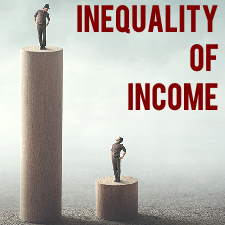Features of a Perfect Competition in Economics
Table of Contents
Features of Perfect Competition in Economics
In Economics, the following are the most important features of a Perfect Competition.
- Large number of buyers and Sellers.
- Homogeneous Product.
- Free entry and exit conditions.
- Perfect knowledge on the part of buyers and sellers.
- Perfect mobility of factors of production.
- Absence of transport cost.
- Absence of Government or artificial restrictions.

1. Large number of buyers and Sellers
In a perfectly competitive market, there will be a large number of buyers and sellers. Large number here denotes that the number of producers are so numerous that they cannot combine and influence the market price by their combined action and decisions. The individual action will not affect the market price because, the quantity offered by the individual producer will be so small when compared to the total quantity offered in the market, that the action of the individuals will be very insignificant and it cannot influence the market price.
Output of a single firm may not influence the demand and price to a great deal in market as it is only a small percentage of overall output. Similarly, on the part of the buyers, the number is so large that there are no possibilities for them to dictate conditions in the market and influence the price by altering the demand. The individual demand will be so small that it will be insignificant if there is any change. So the market price cannot be altered either by sellers or by buyers by their actions individually; nor are there possibilities for a few of them to combine.
In a perfectly competitive market, the individual firm is only a ‘Price taker’ and not ‘Price maker’. They cannot have a price policy of their own and will pay attention mostly to reduce the cost of production. They will adjust output to the market price.
2. Homogeneous Product
The second condition in the perfect market is that the commodity offered should be homogeneous and identical in all respects. The identity should be from the buyer’s angle. The buyers should feel that the products offered by different sellers are the same in quality, size, taste, etc., so that the product of different firms are perfect substitutes in the eyes of the buyers and the cross elasticity is infinite. If this is so, then a single seller cannot charge a higher price, as he will lose all his customers.
From these two important features, we can infer that in a perfectly competitive market, the average revenue curve of the firm will be horizontal to X axis, as the price cannot be altered by the individual firms. No one firm can increase the price. Since the product of the different firms is not considered superior or inferior by the buyers, they will not pay different price. Hence, in a perfect market, there cannot be price difference.
3. Free entry and exit conditions
The Third important condition in perfect competition is that there are no artificial restrictions either preventing the entry of new firms into the market or compelling the existing firms to continue. The firms have full liberty to choose either to continue or go out of the industry. Entry and exit of firms purely depend on economic considerations only.
If the above three conditions alone are fulfilled, then it is called Pure competition. In a pure competition the monopolistic element is absent. With large number of producers producing the same commodity and the liberty to enter and exit the industry, monopolistic combinations are not possible.
In addition to the above stated three features of pure competition, some more conditions are attached to the perfect competition. They are:
4. Perfect knowledge on the part of buyers and sellers
The fourth condition is the existence of perfect knowledge on the part of buyers and sellers about market conditions. The buyers know in full about the commodity sold and the price prevailing in the market. The sellers know the potential sales at various price levels in the market.
Since buyers know everything about the product and the price prevailing, there is no need of incurring any expenditure on advertisement and publicity by the firms under perfect competition. This is significant because, when market becomes perfect, there need not be any advertisement; while the market is imperfect, advertisement plays a dominant role. Ignorance of any buyers is ruled out in a perfect market.
5. Perfect mobility of factors of production
The existence of perfect competition depends on perfect mobility of factors of production. The factor should be free to move from one use to another easily depending on the remuneration they get.
6. Absence of transport cost
In a perfectly competitive market, it is assumed that there are no transport costs. If transport costs are incurred, prices should be different in different sectors of the market.
7. Absence of Government or artificial restrictions
Lastly it is assumed that there are no restrictions from any quarters hindering the smooth functioning of perfect competition. There are no government control or restriction on supply, pricing, etc, and the price should be free to change in response to changes in demand supply conditions. If all these conditions are fulfilled, then the market can be termed perfect and this perfection cannot be had in practical side.



